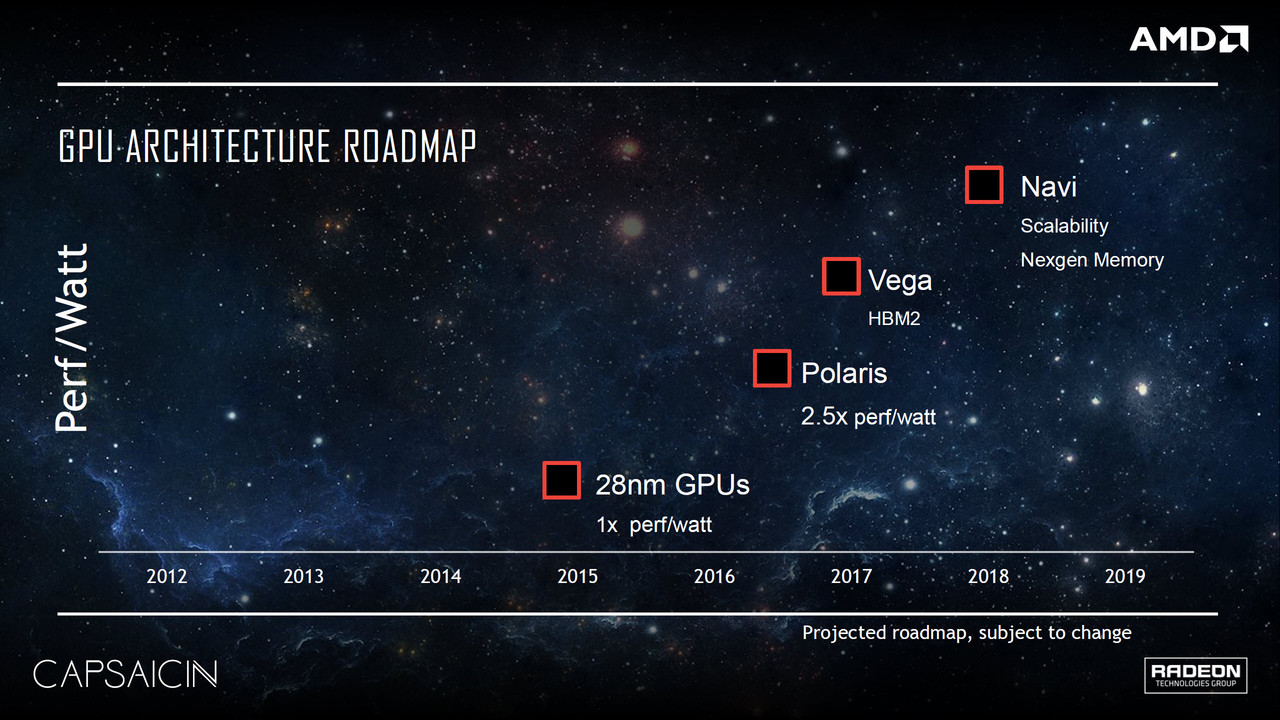I feel like we maay be starting to run away with it a tad and it's best to reel expectations in a bit to not be let down, some are reporting Navi will be a 580 replacement rather than Vega 64 replacement
https://www.fudzilla.com/news/graphics/46038-amd-navi-is-not-a-high-end-card
Navi 7nm the 2019 chip will not be a high end GPU, it will be a quite powerful performance/mainstream chip.
Think of it as the Radeon RX 580 / 480 replacement. It will be small, and is likely to perform as well as the Vega 14nm that shipped last year. In the Nvidia performance world Navi should perform close to Geforce GTX 1080 which is quite good for the mainstream part but probably on part of the mainstream part planned after the high end part.
Note there is no direct source, so this rumor would be scrutinized moreso than a typical rumor.
However, this appears reasonable.
- Navi will likely debut on a 1st gen 7nm process without the yield benefits of EUV (officially we only know that it's on some kind of 7nm process). Therefore, small chips are better if you're only selling to gamers (7nm Vega 20 has pro customers).
- The existing mid-range (Polaris 10 & 11) will be 3 years old in 2019 and desperately needs a replacement.
- AMD has previously dealt with a mid-range-only gaming lineup (see 2016), so it's not entirely unexpected that they'll do it again.
- Vega still has a 4 shader engine limit, which limits the GPU to 64CUs. That's basically Vega 10. Therefore, Navi 10 can only be a "shrunken" Vega 10 unless this limit is removed. However, this limit has existed since GCN debuted, so I doubt it's going anywhere until post-Navi.
On a brief aside, the number of compute engines has been an unexpectedly interesting point of discussion over the years. Back in 2013 we learned that the then-current iteration of GCN had a maximum compute engine count of 4, which AMD has stuck to ever since, including the new Vega 10. Which in turn has fostered discussions about scalability in AMD's designs, and compute/texture-to-ROP ratios.
Talking to AMD's engineers about the matter, they haven't taken any steps with Vega to change this. They have made it clear that 4 compute engines is not a fundamental limitation – they know how to build a design with more engines – however to do so would require additional work.
So think Vega 64 performance in Radeon 580 power, which is still a proper generational leap in performance per watt, but it's a mid range part like the 580 and likely a small tamp down on the part for an APUs power envelope shared with the CPU looking at the PS4.
The Radeon 580 is 6.1Tflops, the Vega 64 is 12.5, so expecting more than a smidgen above the latter is getting optimistic imo. Rounding up to 13 we're about about 7X up from the base PS4 (very very simply, barring any memory, ROP, TMU etc bottlenecks), which ain't bad in my books. 15+Tflops is stretching so far as I see.






